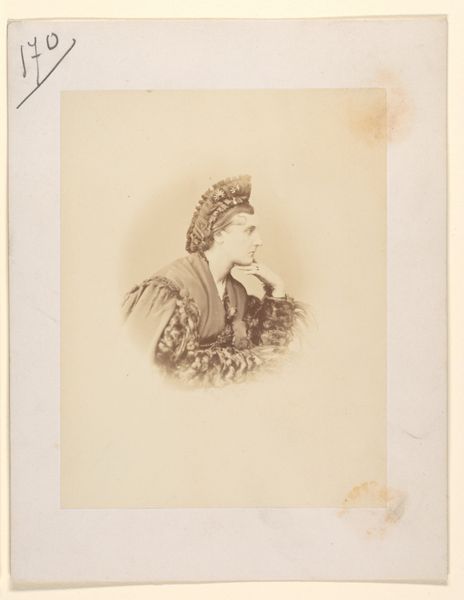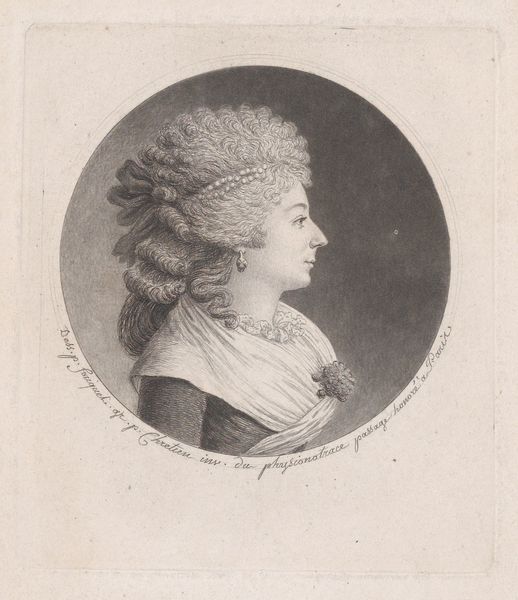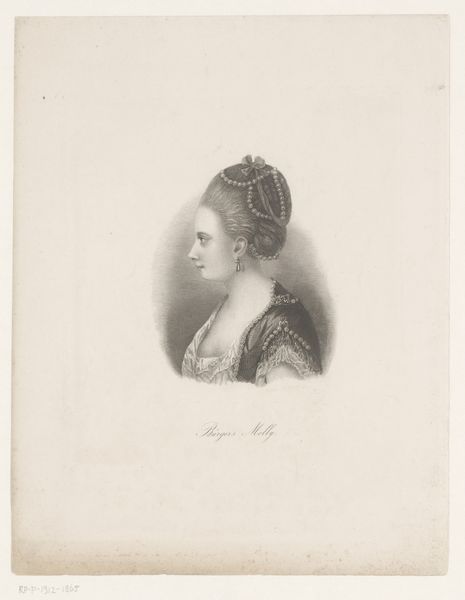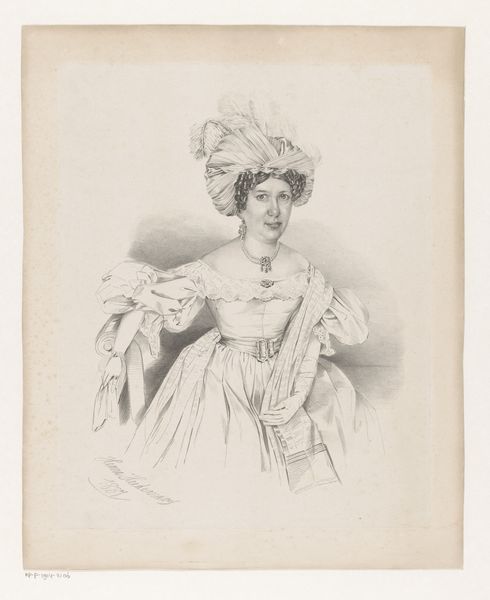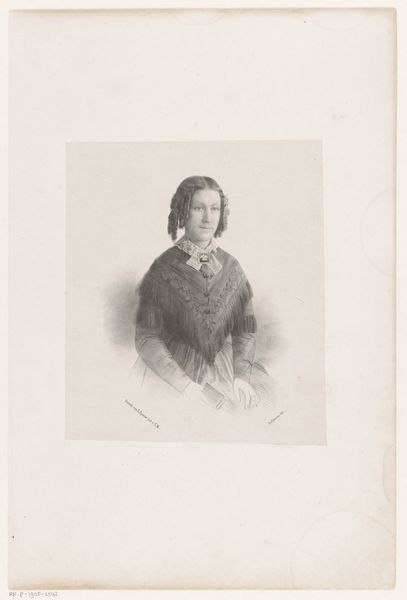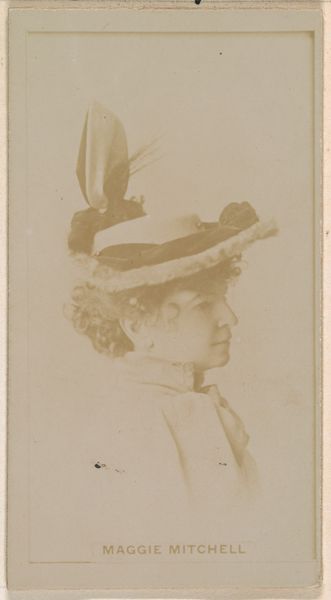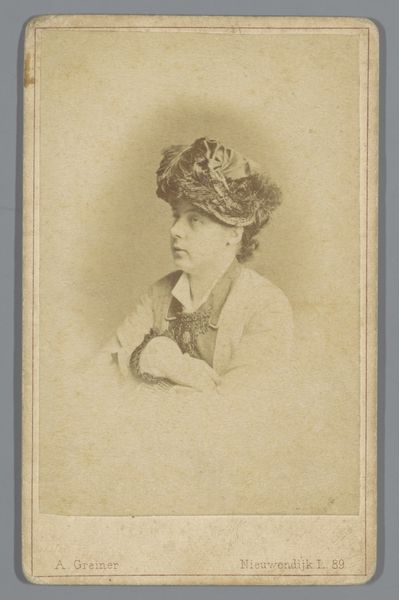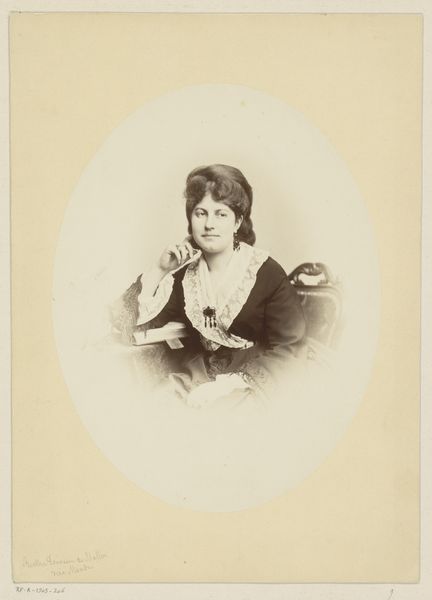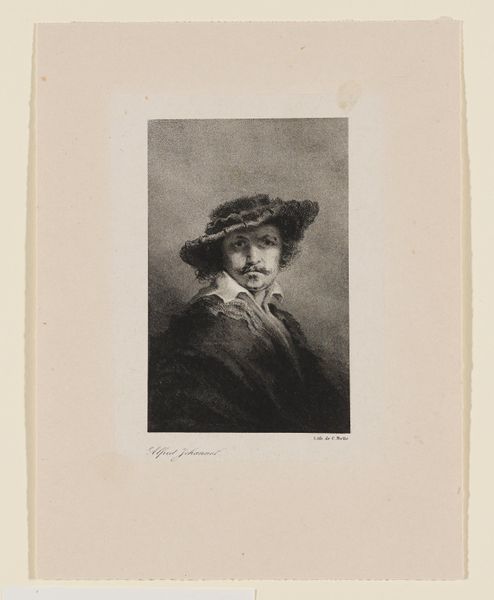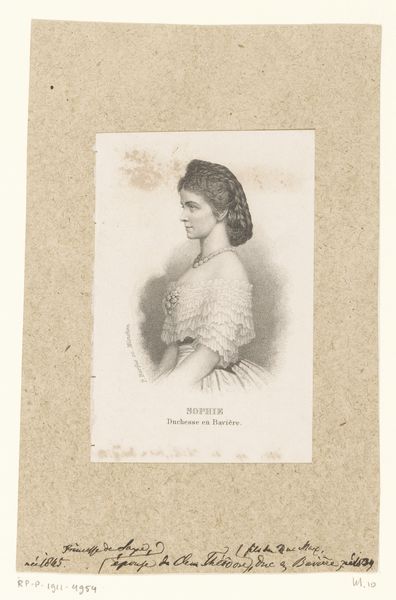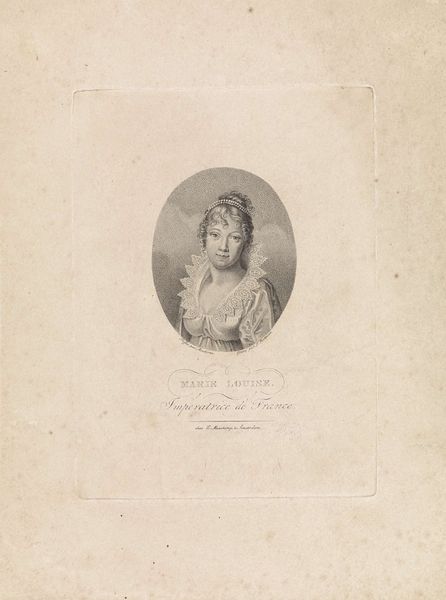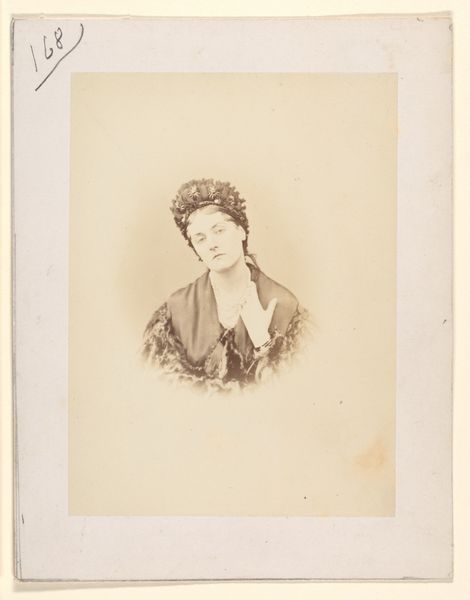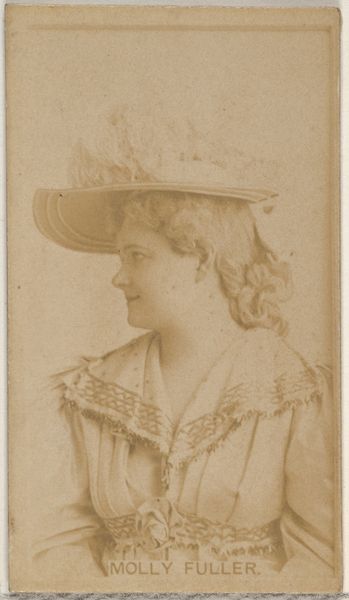
drawing, print, pencil
#
pencil drawn
#
drawing
# print
#
pencil sketch
#
charcoal drawing
#
pencil drawing
#
pencil
#
pencil work
#
realism
Dimensions: 365 mm (height) x 230 mm (width) (bladmaal)
Editor: This is a pencil drawing titled "Johanne Louise Heiberg," created by Franz Wilhelm Obermann between 1830 and 1896. It's a fairly simple portrait, yet there's a delicate sense of refinement. I am particularly drawn to the elaborate detail of her hat. What can you tell me about this portrait? Curator: The hat is indeed key! It tells us so much about the cultural aspirations and ideals of the time. Headwear has always been a signifier of social standing, profession, and even personal narrative. Do you notice the particular tilt of the head, and how the lines subtly convey an inner life? Editor: Yes, her profile suggests intelligence and self-assurance. It's interesting how much personality Obermann captures with just pencil. Curator: Exactly! Consider the rise of the bourgeois in that period. Portraiture became a way for individuals to claim their place in history. Obermann, through his sensitive rendering of Heiberg's features and attire, presents us with a tangible symbol of aspiration. How does her image speak to notions of identity for women of that era, do you think? Editor: I imagine it’s a carefully constructed image, meant to convey both respectability and a certain level of intellectualism, going hand-in-hand with the Danish Golden Age. Curator: Precisely! It makes you consider the enduring power of images, how they serve as mirrors reflecting and shaping our understanding of ourselves and others, over decades and centuries. Editor: I hadn't considered the hat and her posture as symbols carrying so much weight. I learned a lot about how portraiture and symbolism interact to communicate cultural values. Curator: Indeed! And remember, every line, every detail in art carries cultural echoes. Keep looking!
Comments
No comments
Be the first to comment and join the conversation on the ultimate creative platform.
